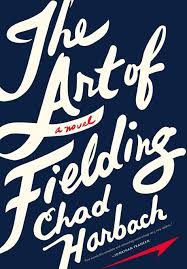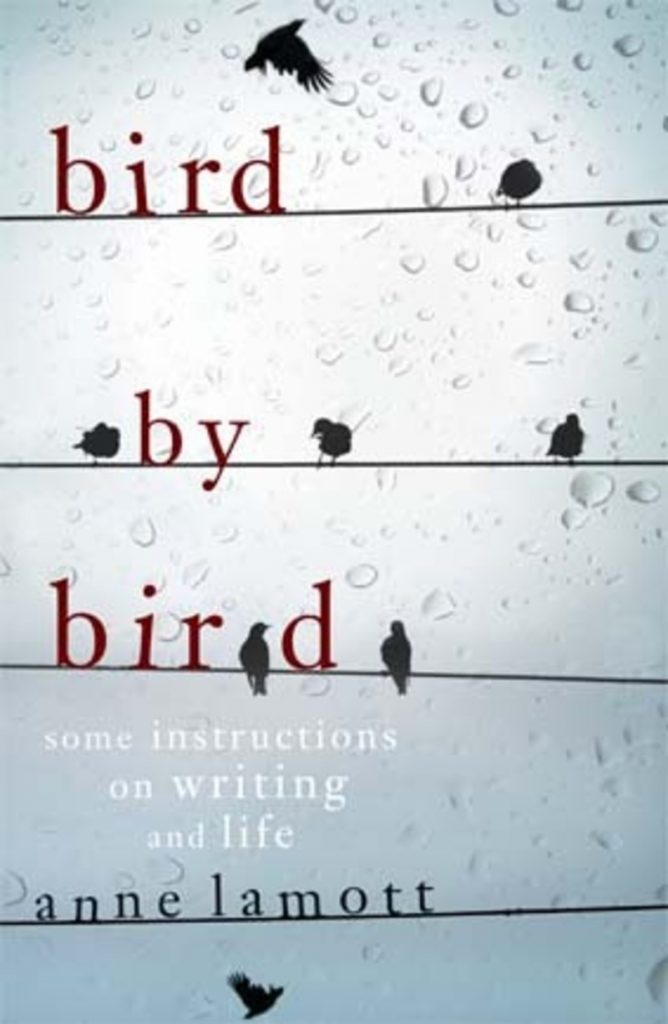by Jalen Eutsey, Librarian
I recently wrote a blog post Get A Taste of Baseball, about The Art of Fielding, Harbach’s magnum opus, an obvious ode to baseball and, more subtly, writing and routine. As I was making my way through The Art of Fielding, I was also reading Anne Lamott’s, Bird by Bird.
Lamott’s book remains a seminal instillation in the genre of craft books on writing. The book, which is subtitled, Some Instruction on Writing and Life, is a fun, fast-paced guiding light for anyone planning to undertake the writing life. It’s a rollicking, irreverent argument for routine—a writing routine. Both books, in their separate ways, advocate for routine, for an intense personal relationship with your craft that can only be developed by consistent effort, which eventually becomes a reward all on its own.
Reading The Art of Fielding, you get the sense that Harbach’s hyper-detailed descriptions of his main character’s workout routines are a metaphor for the novel writing process. Similarly, Lamott wittily details the difficulty of accomplishing the simple task of writing every day. At one point in the book’s first chapter Lamott says this about writing: “It is a matter of persistence and faith and hard work. So you might as well just go ahead and get started.”
Both books ascribe to a blue-collar realism when it comes to what hard work guarantees a person—very little. Lamott explains that hard work does not guarantee that you will become a great writer, but it does guarantee that you will get better. Using musicians as a metaphor, she says, “What’s real is that if you do your scales every day, if you slowly try harder and harder pieces, if you listen to great musicians play music you love, you’ll get better.”
There is a reason this book is something of a classic. Besides Lamott’s characteristic humor, the book is a mix of unimpeachable practicality and airier ideas about the benefits of writing and reading. Lamott lays out her guide to writing every day in two simple steps:
- Short Assignments
- Shitty First Drafts
Short assignments provide the fledgling or struggling writer with a sense of accomplishment and a reason to keep going. Shitty first drafts take the pressure off, thereby making it easier to write consistently. She also provides other practical advice, instructing the reader to try describing only what would be visible within the space of a small picture frame. Lamott admonishes readers against the dangers of perfectionism and demonstrates how ripe all of our mundane lives our for creative exploration.
One of the best things Lamott does is draw a distinction between writing and publishing. She astutely points out that most budding writers “kind of want to write, but really want to get published.” Much of the book is about the dangers of prioritizing publishing over a daily writing routine and a personal relationship with writing. “Almost every single thing you hope publication will do for you is a fantasy, a hologram—it’s the eagle on your credit card that only seems to soar,” she says.
Again, both books share this pull toward the pure, unsullied goal of craft mastery. When Harbach’s protagonist, Henry Skrimshander, focuses on the materializing reality of professional baseball he crumbles, no longer able to complete a simple throw from shortstop to first base. Likewise, Bird by Bird is a generous and forgiving book because Lamott is upfront about all her doubts, insecurities, jealousy, and unrighteous anger. She plainly lays out the neuroticism that defines so many writers. Bird by Bird assures the reader that their struggles are no different than any other writer’s. The only thing to do is write, every day.

